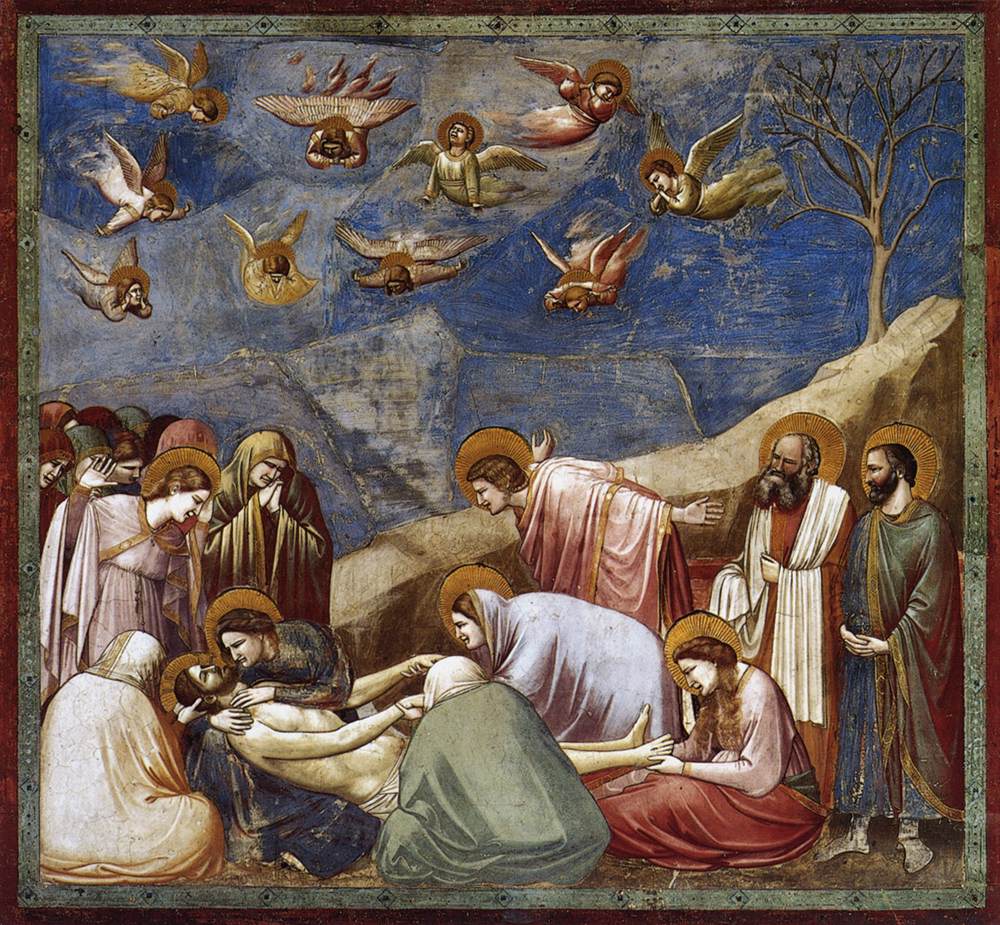Giotto, Lamentation of Christ, Scrovegni Chapel, c1305
Giotto di Bondone (1266/7-1337) was one of the most important Italian painters and a major pioneer of the Renaissance. I featured him in my Christmas post, and decided to write a full post now. Very little is known about Giotto's life. He was born near Florence and spent most of his life there. One possibly apocryphal story tells that he was discovered by the great painter Cimabue, simply drawing on a rock, and Cimabue was so taken with the young boy's lifelike representations that he immediately took him as his apprentice. Whether this story is true or not, it is accurate to say that Giotto's greatest innovation was to draw his figures from real observation. Though this had been practiced in the past, it had not been the convention in European painting for a few centuries. Giotto was also an architect and designed the tower of the Florence Cathedral. His most important work is the large fresco series in the Scrovegni Chapel in Padua (commonly known as the Arena Chapel). The series contains two distinct cycles on each side, depicting the life of the Virgin Mary and the life of Christ. In addition to more realistic figures, the series shows complex use of architecture, the ability to convey depth, dynamic movement, and integration of figures and nature. I chose to feature the Lamentation, because in many ways it encompasses all of these revolutionary features. We see the realistic portrayal of Christ's bodies and the active poses of the mourners. There is intense emotion on these faces, rendered with great depth of feeling. Giotto's creation of the crowd on the left is quite skillful, and balances the composition with the rock and tree on the right. It is also a fine example of his rich use of color, particularly the rich blue (which was particularly expensive at the time) that pervades the series to give a real sense of the sky, allowing the viewer to more viscerally identify with the setting. This is a masterpiece of the early Renaissance, and Giotto's work essentially gave rise to all the western art that followed.

No comments:
Post a Comment